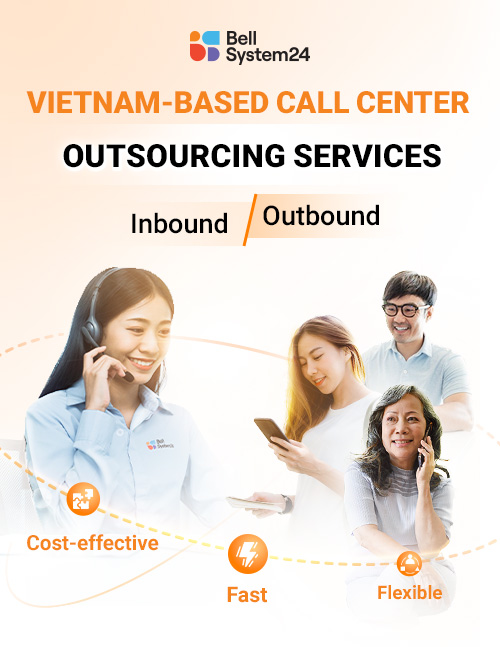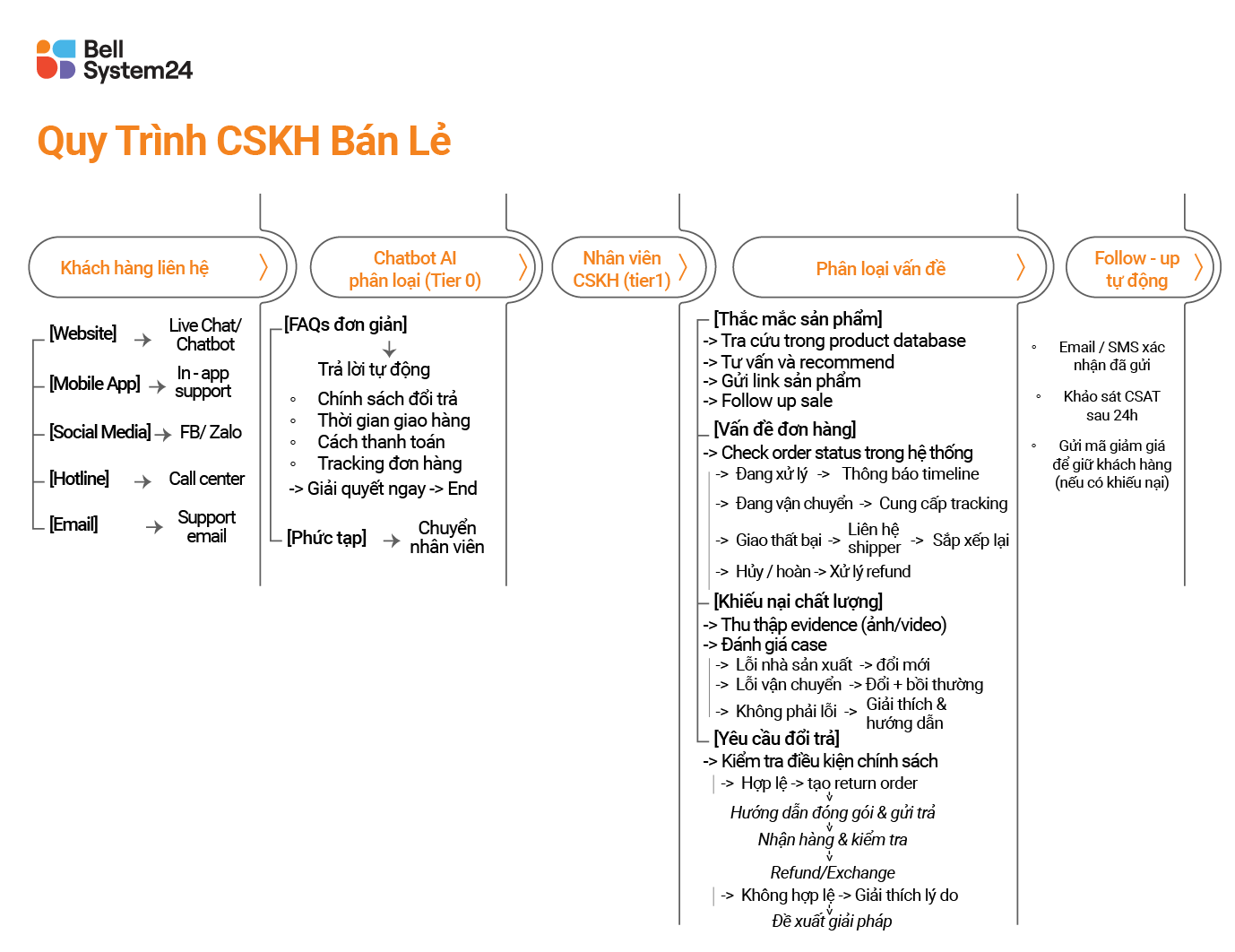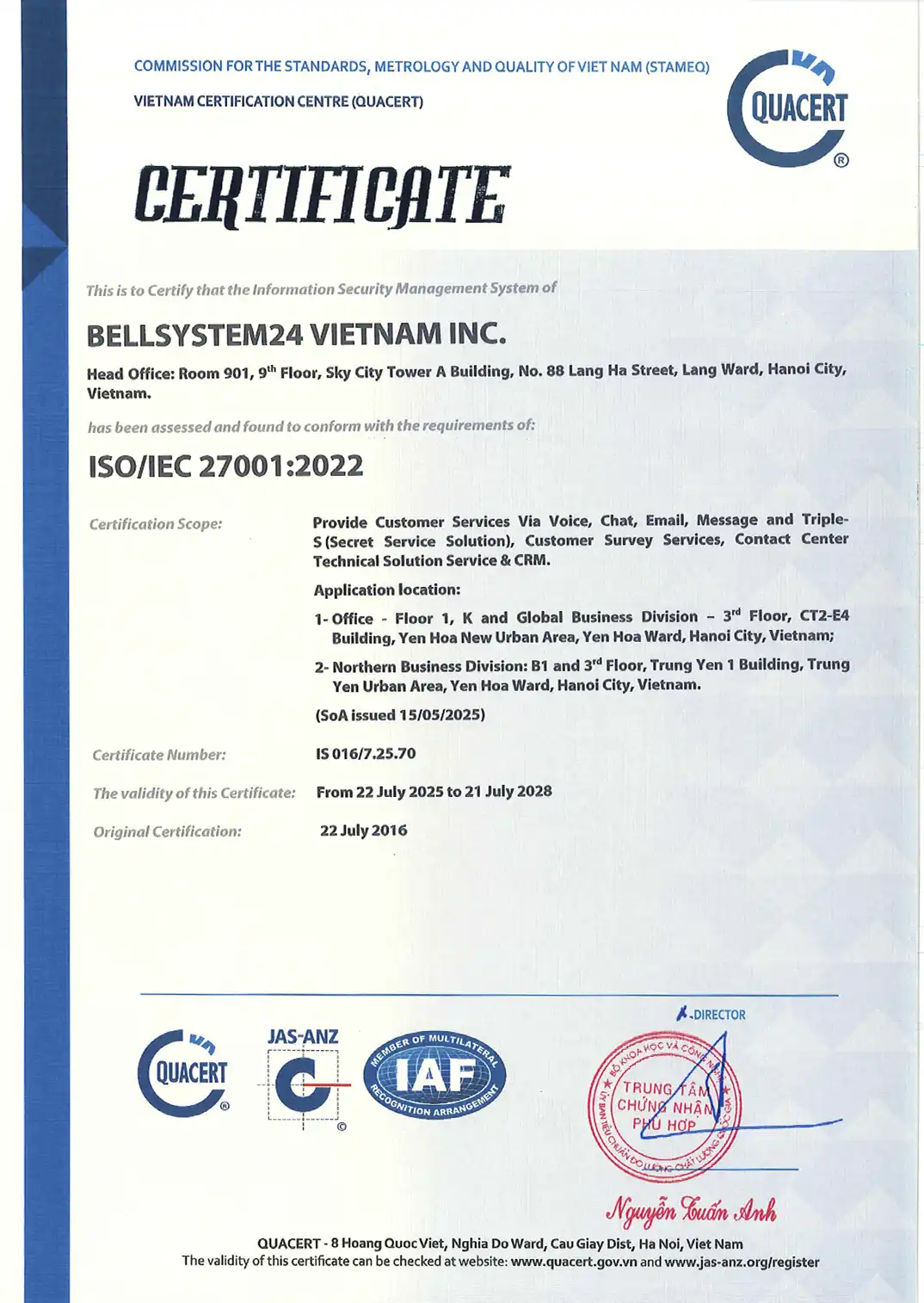In the context of rapid digital transformation, customer purchasing behavior has also changed significantly. According to McKinsey, 67% of B2B purchasing decisions are now made before customers contact any salesperson. This raises an important question: How can salespeople truly add value to the customer's purchasing journey?
What is Consultative Selling?
Consultative Sellers are not just ordinary salespeople. They are consultants who understand the true needs of customers and provide the most suitable solutions. Unlike the traditional approach focused on "selling products," consultative selling puts the customer at the center, transforming salespeople into trusted advisor.
At Bellsystem24 Vietnam (BSV), we have witnessed this remarkable transformation over many years of implementing training programs for large enterprises. After applying consultative selling, one of BSV's insurance projects saw a 431% increase in closing rates and a 281% reduction in sales cycle time.

Why Consultative Is selling really that important?
First, Current customers have access to a wealth of information. They no longer need sales reps to explain products—they need someone to help them understand how to solve their business problems.
Second, The decision-making process is becoming increasingly complex. In a Gartner study, they found that an average B2B purchasing decision involves 6-10 people. Each person has different perspectives, priorities, and concerns.
Tuesday, Competition is becoming increasingly fierce. When products/services become similar, what makes the difference is customer experience and the value that sales professionals bring.
Portrait of a Consultative Seller in the Digital Age
1. Digital-savvy Researcher
They don't start the call with the question "What does your company do?" – they have done their research:
-
Quarterly financial report
-
Business strategy from news & leadership interviews
-
Hidden pain points through job postings, industry trends
-
Competitive position in the market
2. Strategic Questioner
The art of asking questions in consultative selling is not just about asking "What, When, Where...", but rather designing a journey of discovery by posing multiple layers of questions:
-
Layer 1 – Current situation questions:
"What is the current customer complaint handling process?" -
Layer 2 – Problem question:
"Which bottleneck in the process bothers you the most?" -
Layer 3 – Consequential questions:
"If this situation continues, what do you think will affect the customer retention rate?" -
Layer 4 – Questions that spark desire:
"If we reduce the response time to 50%, what does that mean for your team?"
3. Value Architect
Consultative sellers don't sell products – they build solutions. They can:
-
Connections between different pain points
-
Quantify the business impact of the issue
-
Design personalized solutions, address root causes
-
Present the ROI that customers receive when purchasing the product in a convincing and credible manner.
5-pillar training framework for Consultative Seller
1. Develop a consultative mindset
Shifting from a "sales mindset" to a "consulting mindset" is the most important breakthrough. This is not only a change in how you approach customers, but also a complete redefinition of your own role.
This mindset shift requires patience and continuous practice. Salespeople need to learn to ask the question "How can I help the customer succeed?" instead of "How can I sell the product?" This change will impact every interaction, from how you prepare for meetings and ask questions to how you present solutions. Once the mindset is properly established, all other skills will develop naturally and effectively.
Sales consultants need to learn how to:
- Put customer interests first
- Developing active listening skills
- Build trust and personal credibility
- Long-term thinking in customer relationships
See also: Excellent customer service skills
2. Customer research and analysis skills
A skilled Consultative Seller will know how to combine information from various sources to create a comprehensive picture of the customer. From there, they can predict unspoken needs and provide truly valuable insights.
A skilled Consultative Seller must be an excellent "detective." The training framework should include:
- Market research and competitor analysis techniques
- Method for analyzing deep customer needs
- How to use CRM tool and data analytics
- Develop detailed customer personas
3. Master the skills of asking questions and listening
This is the heart of consultative selling. If research helps understand customers from the outside, then the skills of asking questions and listening help explore their inner world. A question asked at the right time and in the right place can unlock invaluable information that customers have never shared with anyone. The training program should focus on:
- Techniques for asking open-ended questions and leading questions
- SPIN Selling Method (Situation, Problem, Implication, Need-payoff)
- Active listening and reading body language
- How to extract information naturally
4. Develop and present solutions
Once they understand the customer's real problem, Consultative Sellers become "solution architects." They don't just sell existing products; they also know how to customize, combine, or even suggest changes to create the perfect solution for each specific customer.
This process requires a high level of systematic thinking and creativity. After thoroughly understanding the issue, the Consultative Seller needs to know how to:
- Design solutions tailored to each specific customer
- Present benefits rather than just listing features
- Use storytelling to create emotional connections
- Handle rejections professionally
5. Managing long-term relationships
This final pillar is what distinguishes Consultative Sellers from ordinary salespeople. They don't just focus on "closing deals"; they also care about "opening up new opportunities." The relationship with customers is viewed as a long-term investment that needs to be nurtured and developed continuously. Consultative selling does not end when the order is signed. Training should include:
- Skills in maintaining and developing customer relationships
- Develop an effective follow-up system
- Create opportunities cross-sell and up-sell natural
- Collect feedback and continuously improve
Effective Consultative Selling Training Method
Learning through practice
Instead of just learning theory, the training framework should focus on:
- Role-play with real-life situations
- Case studies from successful deals
- Shadowing with a senior consultant
- Sales simulation with simulated customers
Continuous and systematic training
Consultative selling is a skill that needs to be honed continuously. An effective training program will:
- Divide into short, easy-to-digest modules
- There is a system of periodic evaluation and feedback.
- Update knowledge according to market trends
- Create a learning community and share experiences
Measuring training effectiveness
To ensure the ROI of the training program, businesses need to monitor the following metrics:
- Conversion rate from prospect to customer
- Average value of each deal
- Sales cycle time
- Customer return and referral rate
Investing in in-depth training programs for Consultative Sellers is not just a trend but a necessity in today's competitive business environment. With the right systematic training approach, businesses can build a sales team that is not only technically strong but also trusted and valued by customers as professional advisors.
The success of the Consultative Seller is the success of the business in creating sustainable value and building long-term relationships with customers.
Consultative Selling Framework in the Digital Age
Phase 1: Thorough preparation (80/20 principle)
The success of the sales consultation is determined before it even begins.
1. Understanding the business
- Financial analysis through public reports
- Latest news roundup, M&A deals, leadership changes
- Research competitors, challenges – opportunities in the industry
2. Identify influencers
- Map decision makers and influencers
- Understand each person's communication style
- Summary of interaction history
- Leverage mutual connections
Phase 2: Discovery Excellence (In-depth exploration)
Discovery is not interrogation—it is a purposeful conversation that helps us understand each other better.
- Analysis of the current state of digitization
- Quantifying pain intensity using numerical data
- Compared to industry standards
- Identify ripple effects within the organization
Phase 3: Solution Architecture (Co-creating solutions)
-
Whiteboard meeting with clients (in person or online)
-
Proof of Concept (PoC)
-
Define clear success metrics
Phase 4: Consensus Building
In complex B2B sales, consensus from multiple parties is a critical factor. Digital tools support:
-
Track the level of interaction of each person
-
Submit appropriate content to address the concern.
-
Align decision-making criteria
-
Let's create an implementation roadmap







